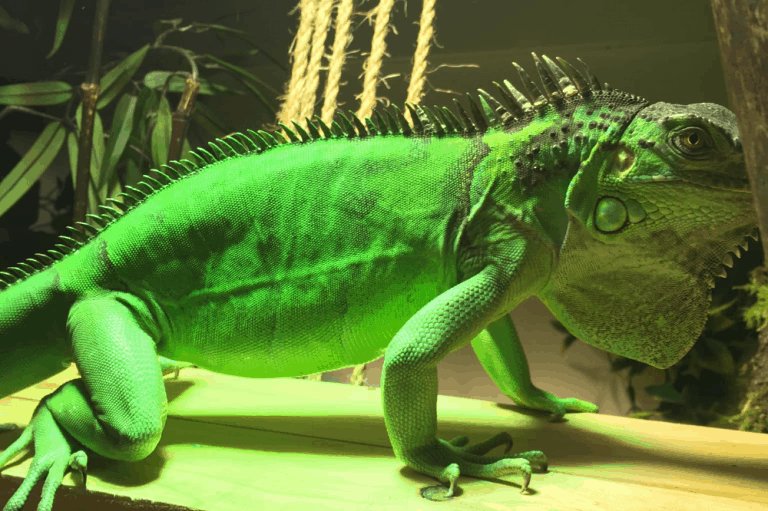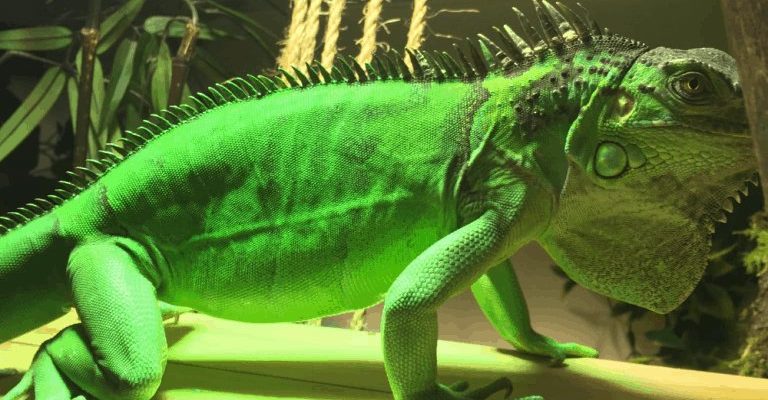
Understanding Blue Iguana Lifespan
One of the most intriguing aspects of blue iguanas is their lifespan. In captivity, these reptiles can live for 20 to 30 years, and some even reach their 40s with the right care. This longevity is impressive and means that bringing a blue iguana into your life is not just a short-term commitment; it’s more like entering a long-term relationship.
In the wild, their lifespan tends to be shorter, usually around 10 to 15 years, mainly due to environmental threats and predators. Factors like habitat destruction, climate change, and human intervention play a significant role in their life expectancy. Honestly, when you think about it, caring for a blue iguana is like nurturing a friendship that spans decades. You’ll want to ensure they have everything they need to thrive.
You might be wondering what contributes to their long life in captivity. Well, proper diet, a suitable habitat, and regular vet check-ups are crucial. Providing a balanced diet rich in leafy greens and vegetables helps maintain their health. A spacious enclosure with the right temperature and humidity also makes a huge difference. These lizards really thrive when they’re well cared for!
Growth Expectations of Blue Iguanas
When it comes to growth, blue iguanas are no small potatoes. They are known to be one of the largest iguana species, with males reaching about 5 to 6 feet in length. Females tend to be a bit smaller, averaging around 4 to 5 feet. From a small hatchling, they can grow to impressive sizes, but it takes time.
Blue iguanas begin their journey as tiny hatchlings—usually around 8 to 10 inches long. Believe it or not, they can grow up to 6 inches in the first year! As they mature, their growth rate slows down but remains significant. By the time they hit their 3rd year, many will have reached about 3 feet. Think of it like watching a child grow from a toddler to a teenager; it’s a gradual process that requires attention and nurturing.
Another factor that impacts growth is their diet. A well-rounded diet full of greens, fruits, and vegetables not only helps them grow but also supports their overall health. Here’s a short list of what you should include in their diet:
- Collard greens
- Mustard greens
- Kale
- Squash
- Fruits like mango and papaya (in moderation)
By focusing on their nutrition, you can set them up for a healthy growth trajectory.
Habitat and Its Impact on Lifespan and Growth
The environment where a blue iguana lives plays a big part in its lifespan and growth. In the wild, they bask in the sun, climb trees, and enjoy a natural diet. In captivity, it’s crucial to recreate this habitat as closely as possible. A spacious and well-equipped enclosure allows them to exhibit natural behaviors, which are essential for their mental and physical health.
Temperature is key. Blue iguanas thrive in a warm climate, ideally between 85°F to 95°F during the day. They also need a basking spot where they can soak up some heat. If their environment is too cold or lacks proper lighting, it can hinder their growth and overall health. It’s like trying to thrive in a chilly house—just not comfortable!
Humidity matters, too! Blue iguanas prefer a humidity level of 65% to 75%. Using a misting system or water bowls can help maintain these levels. For instance, consider investing in a good hygrometer to keep track of humidity in their enclosure. When they feel comfortable, they grow better, and their lifespans tend to extend.
Health Care Essentials for Longevity
To ensure your blue iguana lives a long, healthy life, regular health care is crucial. Just like you wouldn’t skip your own doctor’s appointments, your iguana needs routine check-ups with a qualified reptile vet. These professionals can spot potential health issues before they become serious.
Common health issues for blue iguanas can include dental problems, metabolic bone disease, and respiratory infections. Many of these issues can be linked to improper diet or habitat conditions. Here’s where paying attention to your iguana’s habits can make all the difference. If you notice unusual behavior, it’s best to consult a vet right away.
Another essential aspect of their care is providing mental stimulation. Blue iguanas can get bored, so offering climbing structures, hiding spots, and enrichment activities helps keep their minds sharp. Think of it like giving your pet opportunities to explore and play—it keeps them happy and healthy!
Common Myths About Blue Iguanas
As with many pet species, blue iguanas have their fair share of myths that can confuse potential owners. One common myth is that all iguanas make great pets for beginners. While blue iguanas are stunning, they require a bit more care and knowledge than smaller reptiles.
Another misconception is that blue iguanas can thrive on just any leafy green. While greens are essential, they need a variety of foods, including high-calcium options and safe fruits. This myth can lead to nutritional deficiencies that affect their growth and longevity.
Lastly, many people believe that blue iguanas don’t require much interaction. In reality, while they are more independent than dogs or cats, they do enjoy some level of interaction and stimulation from their owners. Building a bond with your iguana can enhance both your lives.
Bringing a blue iguana into your life is more than just a pet ownership experience; it’s embarking on a long journey filled with learning and bonding. Understanding their lifespan and growth expectations helps you provide the best care possible. Remember, they can live for 20 to 30 years in captivity, so consider this commitment carefully.
By creating a suitable habitat, ensuring a balanced diet, and committing to regular vet visits, you can see your blue iguana thrive over the years. They’re not just reptiles; they’re unique companions that can bring joy and excitement to your life. Embrace the adventure, and you’ll be rewarded with a beautiful friendship that grows alongside you.

